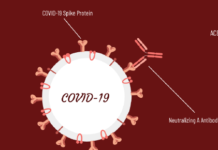Martha B., a mother living in St. Louis County, left her doctor’s office in March of 2004 and tried to digest this news: She had developed breast cancer. “How did this happen?” she wondered. She had been active for most of her life, playing several sports in high school. Now, in her forties, it wasn’t always easy to make time for exercise. The lack of exercise could really have affected Martha in the long run, increasing the possibility of her developing breast cancer, say experts. “I never realized that my lack of exercise could impact my development of breast cancer,” says Martha.

Martha is fortunate; she received treatment and is now an 8-year cancer survivor. This event has also made her realize how important it is to exercise and stay healthy.
The American Cancer Society estimated that in 2011, 232,620 people were diagnosed with breast cancer and 39,720 people died. The good news is that there are approximately 2.5 million women alive today with a history of breast cancer. About 1 in 8 women, with is 12%, will develop a form of “invasive” breast cancer sometime in their life. Breast cancer is commonly associated with women, but men have a risk of developing breast cancer as well, which is about 1.2 per 100,000, according to the Susan G. Komen Association.
At this point in time, there is no known prevention of breast cancer, but engaging in physical activity is recommended for women to try to help prevent obesity, which can be a factor in having breast cancer. “Obesity, physical inactivity, and poor nutrition are major risk factors for cancer, second only to tobacco use,” says Dr. Suzanne Mahon, t he Clinical Professor of Internal Medicine Division of Hematology and Oncology at Saint Louis University Cancer Center.
Some experts, such as Dr. Louise Brinton, the chief of the Nation Cancer Institute’s Environmental Epidemiology Branch, and Dr. Leslie Bernstein, a professor of Preventative Medicine at the University of Southern California’s Norris Comprehensive Cancer Center, believe there is a link or relation between exercise and the development of breast cancer. However, this is still a controversial issue. “Researchers disagree on the exact mechanisms by which exercise modifies breast cancer risk since we don’t know the true mechanism,” says Bernstein.
Various studies, including the studies of Brinton and Bernstein, have looked at the lives of active and non-active people to explore these possibilities. In a 1994 study, Bernstein found that women age 40 and younger who “engage in four or more hours of physical activity per week reduce their risk of developing breast cancer by more than 50% when compared with less active women.”
The American Cancer Society states that breast cancer is caused by uncontrollable division of cells. When cells divide uncontrollably, they create a tumor. Breast cancer originates with a tumor in breast tissue. However, breast cancer can also spread to other parts of the body. At this time, the cause of many types of breast cancers aren’t really known, but some factors that are known to cause cancer are genetics, age, diet, and a person’s health history.
About 5-10% of breast cancers can be attributed to gene mutations. According to the National Cancer Institute, BRCA1 and BRCA2 are two known human genes that can determine cancer risks. These genes are known as tumor suppressors, and “mutation[s] of these genes [have] been linked to hereditary breast cancer.” A woman’s risk of developing breast cancer greatly increases if she inherits these genes. Genetics is still the main factor that will determine whether or not a person develops breast cancer, according to Mahon.
Mahon agrees that physical activity can help decrease the risk of breast cancer, although she says that nobody can say by how much. She stated that while physical activity will help decrease risks of developing breast cancer, it is the gene mutations a person is born with that will ultimately decide if a person develops breast cancer. Putting that aside, she believes exercise can help decrease risk. The American Cancer Society’s Facts and Figures for 2009-2010 also stated that while there are many non-modifiable causes of breast cancer, such as family history, exercise is a modifiable cause that people have control over.
| Related stories: When Breast Cancer Hits Home; Battling Inflammatory Breast Cancer |
Mahon usually recommends to her patients that they have 45-60 minutes of intentional exercise 5 out of 7 days per week. However, Mahon also notes that “how much exercise prevents [breast cancer] we don’t know.” Sarah Jennewein and MaryCaroline Egan

This work is licensed under a Creative Commons Attribution-NonCommercial-NoDerivs 3.0 Unported License














This article is very interesting, I wonder what kind of active history most women with breast cancer had?
What else helps prevent breast cancer?
This is a very good article about breast cancer and a possible way of decreasing the percentage of getting it. :smile Did Martha ever find out how she got breast cancer?
This was well written and artfully presented, I enjoyed reading it. I do wonder, however, could an increase in physical activities once the subject has developed breast cancer help to fight the cancer and decrease risk of fatality?
What would be the best exercise to help prevent breast cancer?
This is a very interesting and informative article. I’ve never heard of exercising preventing breast cancer before.
This article is very interesting. It makes me want to become more active now to take steps avoid cancer
THIS REALLY MADE ME THINK THAT I SHOULD BE MORE ACTIVE TO PREVENT BREAST CANCER
this is interesting. im glad im active
this caught my eye when i read it. i also play alot of sports so this interested me very much..
I have a lot of breast cancer in my family, and i play a lot of soccer. i hope it passes my genes or being active will help me lower my chances!
This article really caught my eye, especially being an athlete. :wah
I play soccer myself and I don’t have any family members that have breast cancer, but I am very concerned if they will get it. they weren’t very active as youngsters, and I would hate to see them live with breast cancer. this article helped me a lot. thank you very much!!! 😀
since im an athlete myself this really caught my attention.:ak
This is a really cool article!! very interesting! :smile